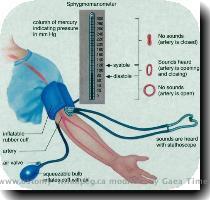Former President Bill Clinton expected to leave hospital day after heart procedure
By APFriday, February 12, 2010
Bill Clinton expected to leave hospital
NEW YORK — Doctors who opened a blocked artery in former President Bill Clinton’s chest say he’ll be able to resume his active lifestyle, starting with his expected departure from the hospital the day after his procedure.
Clinton could leave New York Presbyterian Hospital on Friday and be back at work as soon as Monday, cardiologist Allan Schwartz said.
Clinton had quadruple bypass surgery at the same hospital more than five years ago, and returned Thursday to have a clogged heart artery opened after suffering discomfort in his chest.
The angioplasty is usually done with the patient awake but sedated. It’s one of the most common medical procedures done worldwide. More than a million angioplasties are done in the United States each year, most involving stents.
“It’s not unexpected” for Clinton to need another procedure years after his bypass, said Dr. Clyde Yancy, cardiologist at Baylor University Medical Center in Dallas and president of the American Heart Association.
The sections of blood vessels used to create detours around the original blockages tend to develop clogs five to 10 years after a bypass, Yancy explained. New blockages also can develop in new areas.
“This kind of disease is progressive. It’s not a one-time event so it really points out the need for constant surveillance” and treating risk factors such as high cholesterol and high blood pressure, he said.
The former president has been working in recent weeks to help relief efforts in Haiti. Since leaving office, he has maintained a busy schedule working on humanitarian projects through his foundation.
Terry McAuliffe, former Democratic National Committee chairman and a close friend of the Clintons, said 63-year-old Clinton participated in a conference call on earthquake relief as he was being wheeled into an operating room.
Clinton’s reputation as an unhealthy eater was sealed in 1992, when the newly minted presidential candidate took reporters on jogs to McDonald’s. He was famously spoofed on “Saturday Night Live” as a gluttonous McDonald’s customer.
Friends and family say Clinton changed his eating habits for the better after his bypass surgery.
Schwartz said tests had showed that one of the bypasses from the surgery was completely blocked.
Instead of trying to open the blocked bypass, doctors reopened one of his original blocked arteries and inserted the two stents. The procedure took about an hour, and Clinton was able to get up two hours later, Schwartz said.
There was no sign the former president had suffered a heart attack, and the new blockage was not a result of his diet, Schwartz said.
“The procedure went very smoothly,” Schwartz said, describing Clinton’s prognosis as excellent.
Secretary of State Hillary Rodham Clinton traveled from Washington to New York to be with her husband. She left the hospital about 11:30 p.m. without speaking to reporters.
Aides to Mrs. Clinton said she still planned to go ahead with a previously scheduled trip to the Persian Gulf. The trip was to begin Friday afternoon, but now she is planning to leave Saturday so that she does not have to rush back to Washington.
Clinton’s daughter, Chelsea, was also with him at the hospital.
In an angioplasty, the procedure Clinton had on Thursday, doctors thread a tube through a blood vessel in the groin to a blocked artery and inflate a balloon to flatten the clog. Often, one or more stents are used to prop the artery open.
The angioplasty is usually done with the patient awake but sedated. It’s one of the most common medical procedures done worldwide. More than a million angioplasties are done in the United States each year, most involving stents.
“It’s not unexpected” for Clinton to need another procedure years after his bypass, said Dr. Clyde Yancy, cardiologist at Baylor University Medical Center in Dallas and president of the American Heart Association.
The sections of blood vessels used to create detours around the original blockages tend to develop clogs five to 10 years after a bypass, Yancy explained. New blockages also can develop in new areas.
“This kind of disease is progressive. It’s not a one-time event so it really points out the need for constant surveillance” and treating risk factors such as high cholesterol and high blood pressure, he said.
The former president has been working in recent weeks to help relief efforts in Haiti. Since leaving office, he has maintained a busy schedule working on humanitarian projects through his foundation.
Terry McAuliffe, former Democratic National Committee chairman and a close friend of the Clintons, said 63-year-old Clinton participated in a conference call on earthquake relief as he was being wheeled into an operating room.
Clinton’s reputation as an unhealthy eater was sealed in 1992, when the newly minted presidential candidate took reporters on jogs to McDonald’s. He was famously spoofed on “Saturday Night Live” as a gluttonous McDonald’s customer.
Friends and family say Clinton changed his eating habits for the better after his bypass surgery.
AP Medical Writer Marilynn Marchione reported from Milwaukee. Beth Fouhy in New York, and Julie Pace, Matthew Lee and Darlene Superville in Washington also contributed to this report.
Tags: Diagnosis And Treatment, Geography, Heart Health, New York, North America, Stents, Surgical Procedures, United States


